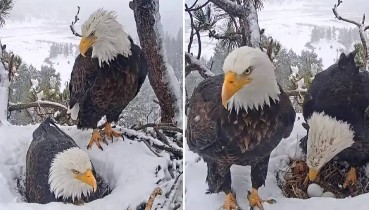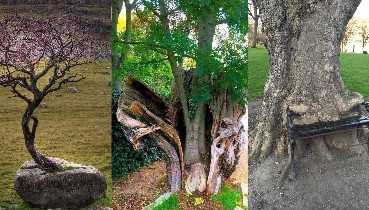

Sea Sheep – This Adorable Sea Slug Eats So Much Algae
Is this a sheep? Or is this a cow? No, this is none other than the Costasiella kuroshimae, the leaf sheep. This creature is also known as the salty ocean caterpillar. The animal world is filled with unique creatures we don’t even know about and this creature is one you most probably haven’t even heard of before. This little sea slug with vibrant colors will definitely take your breath away.
The creature looks as if it came right out of a cartoon because it appears quite similar to a cartoon sea sheep. This leaf sheep has beady eyes and cute feelers that give it an adorable look. Just like cartoon sea sheep, these creatures too feed on algae. The leaf slug was discovered off the Japanese island of Kuroshima in 1993. It can generally grow up to 5mm in length. They are found near some Asian countries such as Indonesia, Japan, and the Philippines.

Sea slugs are fascinating animals because they are considered to be one of the only sea creatures in the world with the ability to perform photosynthesis. It is the process used by green plants and some other organisms to transform light energy into chemical energy. The other sea creatures that can perform photosynthesis belong to the sacoglossa sea slug class.


These extraordinary sea slugs consume algae and absorb chloroplasts. They then incorporate the chloroplasts into their bodies using a process named kleptoplasty. In other cases, this process can only be performed by single-celled organisms. So technically they are similar to solar-powered slugs. Isn’t that just mind-blowing? Its vibrant complexions are beautified with colors such as white, green, and purple. These leaf sheep can be better observed in black backgrounds, in order to further analyze their hues.


Image Credit & More Info; Randi Ang
Recommended Videos
 An Abandoned Mansion In The Irish Forests469 views
An Abandoned Mansion In The Irish Forests469 views Hidden Camera Catches Doting Eagle Doing Everything He Can To Please His Wife54 views
Hidden Camera Catches Doting Eagle Doing Everything He Can To Please His Wife54 views-
Advertisements
 30 Chrysanthemum garden landscaping ideas that will amaze you725 views
30 Chrysanthemum garden landscaping ideas that will amaze you725 views Learn How n' Why Use Epsom Salt For Your Roses109 views
Learn How n' Why Use Epsom Salt For Your Roses109 views Photographer Captures Amazing Light Pillars In Northern Ontario (20 Pics)66 views
Photographer Captures Amazing Light Pillars In Northern Ontario (20 Pics)66 views “An Amazing World Right Under Your Nose”: 24 Pictures Of Nature That I Took With A Macro Lens341 views
“An Amazing World Right Under Your Nose”: 24 Pictures Of Nature That I Took With A Macro Lens341 views 84 Badass Trees That Refuse To Die No Matter What4524 views
84 Badass Trees That Refuse To Die No Matter What4524 views 15 Lovely Designs That All Are Cute1369 views
15 Lovely Designs That All Are Cute1369 views



